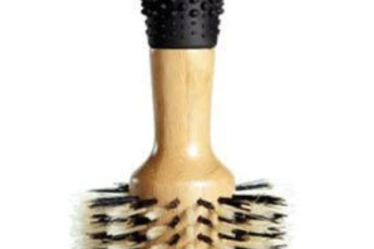
“People don’t buy sustainable products,” said Allbirds co-chief executive Tim Brown. “They buy great products.” The company’s goal is to prove its products can be both.
By the end of the decade, the San Francisco-based footwear brand aims to reduce the average carbon footprint of its shoes to near zero, slashing emissions even as it grows.
It’s not there yet. Last year, the company brought down the average footprint of each product by 12 percent, but its overall carbon emissions rose nearly 50 percent as the business expanded, according to an impact update published Friday.
This year, Allbirds expects to shave another 6 percent from its average product footprint, but it said these incremental reductions are expected to become more substantial from 2023 as ongoing efforts to shift the materials it uses start to pay off. By 2025, the company said it expects to begin decoupling growth from impact.
“We have to bend the line,” said Brown. “The next few years are really critical.”
But revamping products costs money and the company’s ambitions are running up against an increasingly challenging economic landscape, as rising inflation and an uncertain economic outlook curb consumer spending.
Allbirds’ share price has plummeted nearly 90 percent since it went public in November last year amid a broader market sell-off. In August, the company downgraded its outlook for the year and announced cost-cutting measures, including reducing its corporate workforce by eight percent.
“It’s been a rough time for sure, and the absolute worst conclusion from the last 12 months is that purpose doesn’t matter,” said Brown. “But for the businesses that crack the code here, there’s enormous consumer and financial reward.”
Cutting emissions and cutting costs aren’t incompatible, according to Allbirds. Among the steps it laid out in August are efforts to transition to automated distribution centres in the US and accelerate efforts to reduce logistics and product costs.
“There’s myth busting to be done that sustainability always costs more,” said Allbirds sustainability head Hana Kajimura. “It does sometimes certainly, if you’re going to invest in novel materials, but… ocean shipping or using less materials, being more efficient, minimising waste, [these things] save money.”
As the company looks to accelerate its ambitions in the coming years, it may prove harder to strike the balance between spending and impact.
Last year’s reduction in the company’s average product footprint rested almost entirely on a small increase in the number of products shipped by sea instead of air, an effort to shift most of the company’s operations to renewable energy and a programme to buy renewable energy credits to essentially offset the impact of manufacturing.
Those moves were ”low-hanging fruit, the things we could do immediately,” said Kajimura. This year’s 6 percent target relies on dozens of different projects intended to incrementally keep driving the company’s footprint lower in areas from packaging to logistics.
Going forward, it’s expecting to start to bank returns on a long-term effort to shift its wool supply chain to regenerative practices, but it also still needs to figure out gnarly challenges like finding natural materials that perform as well as synthetic shoe components and working with suppliers to really decarbonise the supply chain.
“It’s becoming clearer and clearer that the work we have to do is around trying to make ourselves bigger and shifting whole systems, whether [through] policy work or teaming up with other companies that are much bigger than us,” said Kajimura.


